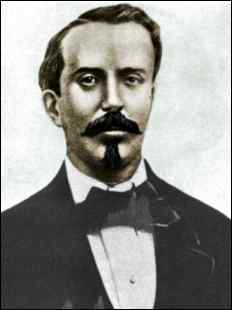
The Ten-Year War (1868-78)
The first large-scale war for Cuban independence began on October 10 1868 with a historic speech known as the Grito de Yara (Cry of Yara) by landowner and slave-owner Carlos Manuel de Céspedes. From his farm, La Demajagua, Céspedes freed his slaves and declared war on the Spanish crown.
Thirty-seven other local planters joined in, freed their slaves and donated their property. The first clash with Spanish troops took place at Yara two days later, and by November the rebel army had grown to 12,000 men.

Within the first year of the war a young man named Antonio Maceo rose to the unprecedented rank of lieutenant colonel of the Liberating Army and captured the admiration and imagination of black and white Cubans alike.
The war lasted ten years, but ended in a stalemate. On February 11 1878 both sides signed the Treaty of Zanjón at a meeting in Zanjón, Camagüey. The agreement established that slaves who fought on either side were freed, but slavery was not abolished and Cuba remained under Spanish rule.
Maceo opposed this friendly cease-fire because it did not fulfill the goals of the revolution: to end slavery and achieve independence. He expressed his views in the circular known as The Protest of Baraguá.
The Mambises (as the rebels were often called) did not prevail for a variety of reasons; lack of organization and resources; lower participation by whites; internal racist sabotage (against Maceo and the goals of the Liberating Army); the inability to bring the war to the western provinces (Havana in particular); and opposition by the U.S. government to Cuban independence.
Many of the graduates of this war, however, became central players in Cuba's war of independence started in 1895. These include the Maceo brothers, Maximo Gómez, Calixto Garcia and others.
Even though the island was too valuable for the Spanish to lose (Cuba was their last foothold on the new world), the idea of a free and independent Cuba had soaked the national consciousness and would not die.
Related:
The Little War | War for Independence | José Martí | Martí Timeline
Follow the Antonio Maceo timeline. Known in Cuba as The Bronze Titan, Maceo received 24 battle wounds fighting for Cuban independence. During the war, the Spanish press called him The Lion. (Maceo is one of the most loved figures in Cuban history.) | Read Maceo's Protest of Baraguá